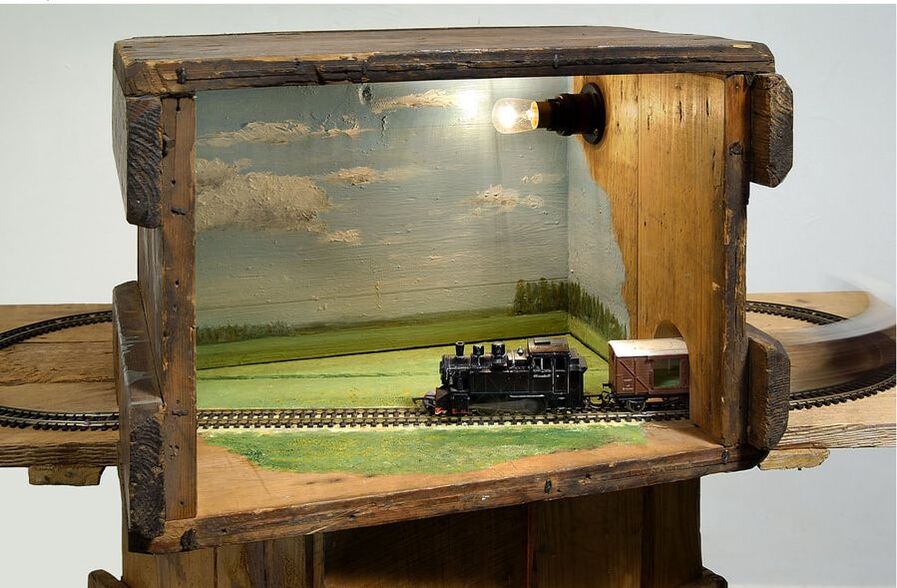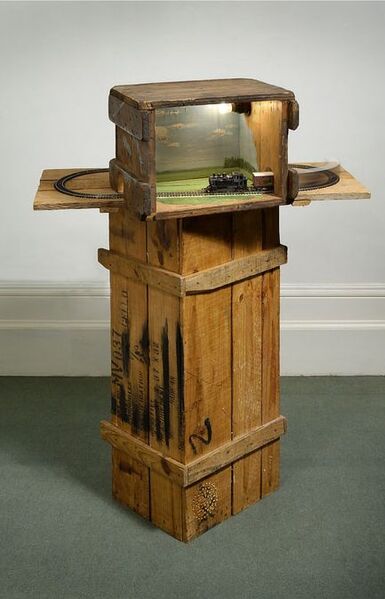-
in gallery
- Transit Transition >
- Remnants Of Utopia >
-
Antarctica
>
- Project Outline
- Antarctica Essay
- Reviews
- Sledge
- Toy Sledge
- Airfix Antarctic Aeroplane Hoover
- Eating Penguins
- The Rime Of The Ancient Mariner
- Toy Snowmobile
- Rat Box, Bird Island
- Rejection Letters
- The Last Roll Of Kodachrome In The World
- John Deere Gator And Specimen
- There Are No More Dogs In Antarctica
- Furthest South- J C B
- Captain Scotts Bookshelf
- Antarctic Toy Portraits
-
Landscape, Seascape, Skyscape , Escape
>
-
Offer Must End Soon
>
- Essay Jess Twyman
- Reviews
- Offer Must End Soon
- Buy My Painting!
- "Buy My Painting!" For the hard of hearing.
- "Don't Make Me Take It All Back Home With Me!"
- How We Won The War
- "Stop me and buy one!"
- 'The Cornfield'... free gift inside
- "Catalogue!"
- The Contemporary Art Scene
- Camera Crash
- "Untitled" hanging itself
- Buy My Fucking Painting!
- Absolut Ship !
- Executive Toy!
- Art Stunt Suicide Disaster
- Roll up, Roll up. Get your Art here!
- Big Country >
- All at Sea
- & Model >
- Give Me The Money
- Music and domestic appliances >
- ...on the wall...in boxes >
- Sweet Jars, glass cases on books >
- On Stage
-
Outside gallery
- Auspicious Phoenix Recycling Palace
- Covid lockdown with Boris >
- Goat Train
- washed up Car - go >
- Vanishing Point >
- Badgast Residency >
- Selfie Slot Car Racing >
- Coventry Transport Museum Residency >
- Cheap Cheap >
- A Portrait of Casper DeBoer
- Cranes
- Hessle Road Residency >
- Reisbureau Mareado >
- Windmills >
- Performance Sculptures >
- Accessible Collectible
-
publications
- Solo projects >
-
Group Projects
>
- oceans
- Photography, Curation, Criticism:
- Art in Oisterwijk 2022
- Talk to me
- & Model
- Middlesbrough Art Weekender
- Polar Record
- Translating the Street
- 1st Sino/british Cont. Art, Yentai
- Extending Ecocriticism
- The Dream Cafe
- Performance, Transport And Mobility
- shipwreck in art and literature
- Inbetween PS1, New York and Shanghai
- Odd Coupling
- Landscapes of Exploration
- IT! The Worst Magazine Ever : Poland
- Flip Shift Show Switch
- Baudrillard Now
- The Juddykes
- Dr Roberts Magic Bus
- Continental Breakfast
- Lat (living Apart Together)
- North. Amsterdam 2004
- Westwijk, Vlaardingen, De Strip
- Da Da Da Strategies Against Marketecture
- Reisburo Mareado (The Travel Brochure)
- Catalogus Mareado
- Kunst Over De Grens
- This Flat Earth
- The Uses of an Artist
- Kettles Yard Open 97
- Royal College Of Art Centenary Year
- Millennium Encyclopedia
- Press
- About / contact
Film: Ron Suffield. (3mins. 33secs) Materials: Wooden box, model train loco and box car, model railway track, oil paint, record player, 78 record. Music: 'The Happy Wanderer' sung by the 'Obernkirchen children's choir'. 2001
When I was still an art student, I was sent to Poland by my half Polish sculpture tutor on a research trip. I went by train but it was 1990, before the Channel tunnel had been completed. The boat train took me to Harwich where a ferry took me to Holland. In Hoek van Holland Haven train station there was a multi-coloured train made up of several different train company liveries from all over Europe. Each section of carriages were to be uncoupled as they reached their country of origin on our journey across the continent. I walked down the long platform until I found a railway carriage with ‘Warsaw’ written on the side. Further down the platform there were even carriages going to the Soviet Union.
|
Ten years later, in 2000, I was invited to be part of a sculpture trail in Hoek van Holland -'Kunst over de grens' ('Art crossing the border'). On a brief visit there I had to choose a location in the town and make an appropriate art piece for it. The international trains had stopped running some years earlier but the long empty platforms remained. It was here that I proposed to make my work. The empty eerie platform had a history and allure of far off distant lands but for me it also had a personal connection.
My father’s family had been deported during World War Two from eastern Poland to ‘Siberia’ by Stalin’s NKVD police during an ethnic/political cleansing operation in 1940. The family were transported in box cars and although they were repatriated to Poland after the war they never went back to their original home, which still remains part of Russia to this day. My father resettled in England after the war. When I was a child he built a shed in the garden for my train set and like most children’s train sets it went around in a circle. When I grew up I realised this was at odds with the relationship to trains he had as a child. For him they were very real, went in a straight line and never came home again. My plan was to lay a train set in a wooden box car at the platform in the old international station. I planned to paint a landscape on the interior. In effect this would have been a very large painting in a box. The destination on the carriage would read ‘Vladivostok’, in essence connecting the toy train to the other side of the Euro-Asian mainland. |
The funding bid for the project fell through and it never happened (See ‘Cheap Cheap’). 'Europa' was made a year later and came from the initial research for the proposed project in ‘Hoek van Holland.
The two boxes store one inside the other and are made with transit in mind. The music, ‘The Happy Wanderer’ is sung in German. This ties the work to the more culturally well known transportations of World War Two- the Nazi Jewish genocide. I have always been in two minds about whether it is my place to make this cultural reference (See ‘Reisbureau Mareado’). This dilemma later led me to make ‘Siberia’ which uses more personal visual references and Polish music. ‘Europa’ is in a private collection.
The two boxes store one inside the other and are made with transit in mind. The music, ‘The Happy Wanderer’ is sung in German. This ties the work to the more culturally well known transportations of World War Two- the Nazi Jewish genocide. I have always been in two minds about whether it is my place to make this cultural reference (See ‘Reisbureau Mareado’). This dilemma later led me to make ‘Siberia’ which uses more personal visual references and Polish music. ‘Europa’ is in a private collection.

